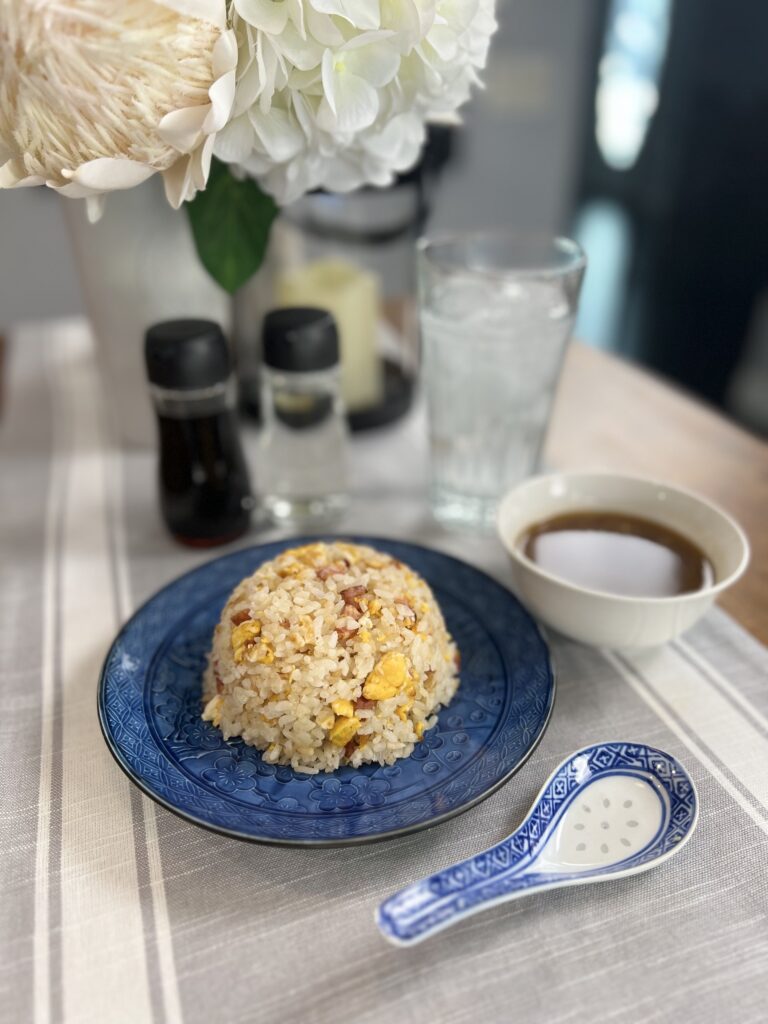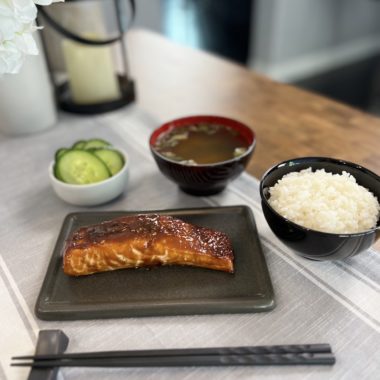Details
1-2
10 min
5 min
Yokohama is a port city near Tokyo famous for being a haven for foreign trade for centuries. It’s also home to Japan’s largest Chinatown (the other two are in Kobe and Nagasaki). Over 150 years old and housing over 600 businesses, it’s a very busy part of town. It’s always full of locals & tourists enjoying the restaurants and gift shops tucked away in the numerous alleys. Chahan, or Japanese-style Chinese fried rice, comes from here.
One of my first jobs after school was working at one of the restaurants in Yokohama Chukagai (横浜中華街). Selling steamed bao buns outside the restaurant’s front doors to passers-by was so much fun! I wonder if it’s still around.
Part of working at a restaurant in Chinatown was the employee “family dinner” between lunch and dinner service. The chefs would prepare a whole bunch of dishes and put them out on the large circular tables. We’d serve ourselves “family style” while chatting and getting to know each other. Even though I was a part-time employee, they still made me feel like I was family.
Each restaurant in Chinatown has its own specialty. Ours was a Cantonese noodle shop. In addition to noodle soups and fried noodle dishes, they would have fried rice, also known as chahan in Japan.
Chinese fried rice in the States is not very sticky at all because of the rice. It also uses a lot more soy sauce, making it fairly dark in color. Japanese chahan is lighter in flavor; very little soy sauce, and with just a few ingredients. I would say it’s close to “Yang Chow fried rice” in the States.
Chahan, on the other hand, uses short grain rice. Instead of using day-old rice, cooked rice straight from the rice cooker is tossed with vegetable oil to separate the grains. That’s what prevents them from sticking to each other, and avoid getting mushy. It’s similar to how you would toss pasta with a little olive oil.
The main protein in Japanese chahan is egg. My version is simple – I just crack an egg into a frying pan and scramble it as it’s cooking, with some of the yolk and whites cooking separately, so you get different flavors with each bite. Some chefs will mix the raw egg into the cooked room-temp rice before putting the whole thing into the frying pan.
Once you have the basic chahan recipe figured out, add other proteins you’d like. Finely chopped Chinese sausage, Japanese sausage (soh-sae-ji), bacon, Canadian bacon, chicken (thigh / breast), and roasted pork chashu / charsiu all work here. So does shrimp, crab, or lobster.
Chahan can be a main course by itself (though low in veggies), or as a replacement for steamed white rice as part of a bigger meal. It’s also delicious at room temperature, so it’s great as a bento dish for lunch or picnics. Just make sure you also put some of the soup in a thermos to take along.
If you ever get to visit Japan, definitely stop by Yokohama Chukagai / Chinatown. I think you’d have a lot of fun. Just avoid the weekends, though – it’s a packed madhouse then!

Ingredients
- 200g cooked rice
- Vegetable oil
- 1 sausage, finely chopped (can sub any protein)
- 1 tbsp green onion, finely chopped
- 1 egg
- Salt & pepper
- 1/2 tsp soy sauce
- 1 tsp sake or Chinese cooking wine
- Sesame oil
Accompanying soup
- 500 ml water
- 1 tbsp green onion, finely chopped
- 1 tbsp soy sauce
- 2 tsp torigara chicken stock powder / paste
- Sesame oil
- Salt & pepper
Directions
Cook rice in a rice cooker; when cooked, immediately remove from the rice cooker and toss in a bowl with some vegetable oil. Set aside to cool to room temperature; do not put in the fridge.
In a frying pan over medium heat, fry finely chopped sausage (or your protein of choice) along with the finely chopped green onion.
Add egg to mixture without scrambling first.
With a spatula, mix everything together and break up egg so you have smaller egg white and yolk bits.
Add rice and fry everything together.
Add seasonings – salt and pepper, sake, and soy sauce.
Drizzle a small amount of sesame oil and toss before serving.
Accompanying soup:
In a pot, heat up water and add soy sauce, torigara powder / paste, and salt & pepper. Add chopped green onions and drizzle sesame oil.
Serve alongside fried rice.

